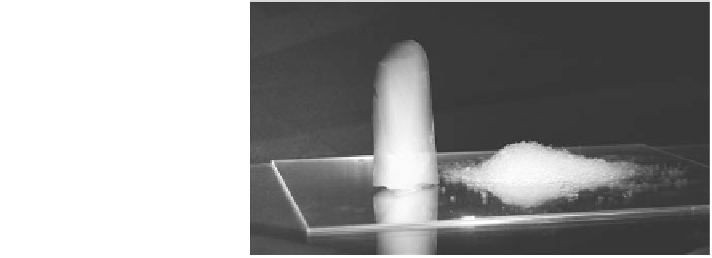Civil Engineering Reference
In-Depth Information
Fig. 22 Monolithic silica
aerogel (on the left side) and
silica aerogel granulate (right
side)
which focus the field of application to such cases where the superior thermal
insulation properties are needed to save space and to provide solution where
classic insulation materials fail.
4.2 Applications
4.2.1 Microporous Thermal Insulation for Thermal Separation
The Fraunhofer Institute for Solar Energy Systems ISE, Freiburg (Germany),
conducted a research project for the energetic refurbishment of a multistorey
residential building which was build in 1968 (cf. Fig.
23
) (Schneider
2012
). A
main challenge was the thermal separation of the balcony construction. The
existing construction with massive concrete ballast and cantilevering concrete
slabs as balconies required a technical solution of the thermal bridges. As a sub-
stantial measure, the existing balconies were integrated within the thermal building
shell and replaced by new thermally separated balconies which had also the
advantage that additional living space could be provided. For thermal insulation at
the thermal dividing line, a microporous insulation product based on silica aerogel
was used. The hydrophobic product 'Spaceloft 10 mm' from aspen aerogels, USA
(cf. Fig.
24
), offers a remarkable low thermal conductivity value of
0.013 Wm
-1
K
-1
at 10 C. However, the product is very dusty and the use of
personal protection equipment (gloves, safety goggles and overalls) is recom-
mended. The technical solution of the thermal separation is presented in Fig.
25
.
After refurbishment of the building, the heat demand could be reduced by 80 % to
a value of 15 kWh m
-2
a
-1
.
4.2.2 Microporous Thermal Insulation for Internal Insulation
In the autumn of 2011, a 150-year-old farmhouse in the southern part of Germany
was refurbished (cf. Fig.
26
). For the building owner, it was substantial that the

